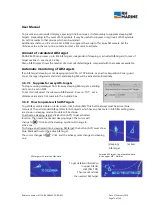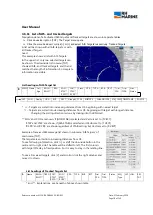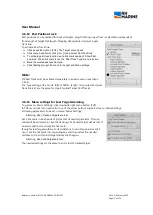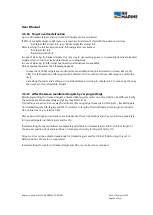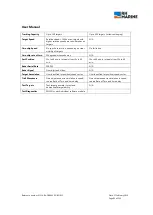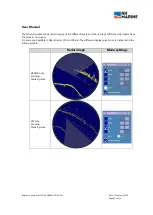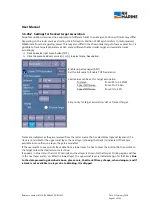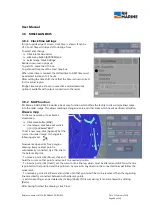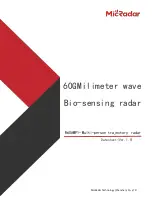
User Manual
Reference number: 4111A-RADAR4600-GBD-R1.1
Date: 27 February 2018
Page 85 of 149
3.6.19
Multi radar functionality (Optional)
The multi radar image and multi target association is optional functionality.
Due to vessel construction and load, there might be blanked areas, where no radar image is available in a
single radar scanner. Tracks within this area would be classified as
lost
normally. When using the information
of a second radar scanner, tracks are still available from this second sensor source. The picture below
illustrates the situation.
Two radar scanners (RADAR A and RADAR B) on the same vessel have different blanking areas, indicated as
dashed areas. The ARPA tracker of each radar provides tracks from its radar source and the Multi Target
Manager associates this information. Within the display, tracked targets of different radars that are
associated within an association group, are treated like a “single” target. The target of the topmost radar
layer within this association group is visible on the screen. If a target is not available in this layer, the target
in the next layer is indicated. All other tracks of the same association group are suppressed.
The shaded areas of the two radars must not overlap, but the areas of acquisition do overlap.
Therefore, the areas covered by both radar scanners provide doublets of the same target, since both radars
provide tracking data of the same target (indicated by [ ]).
Additionally, if a track that used to belong to an association group gets lost, the system tries to establish
this tracked target again when the association group enters the area of reception within this layer again. As
a consequence the TT ID of this track changes like if it was manually acquired again. This is an automatic
initiation mechanism to prevent association groups from dying due to the blanking areas. Automatic
initiated tracks that leave an association group for some reason, are automatically and silently removed.
There is no warning generated for them. If the last track within an association group dies, an alarm is
generated.
Please note: As radar images are not merged, tracks are associated for processing from each radar.
Because radar images are shown in overlay, the track is always visible for the operator, but might
have a different track IDs, depending on the sector, where they are detected
.




